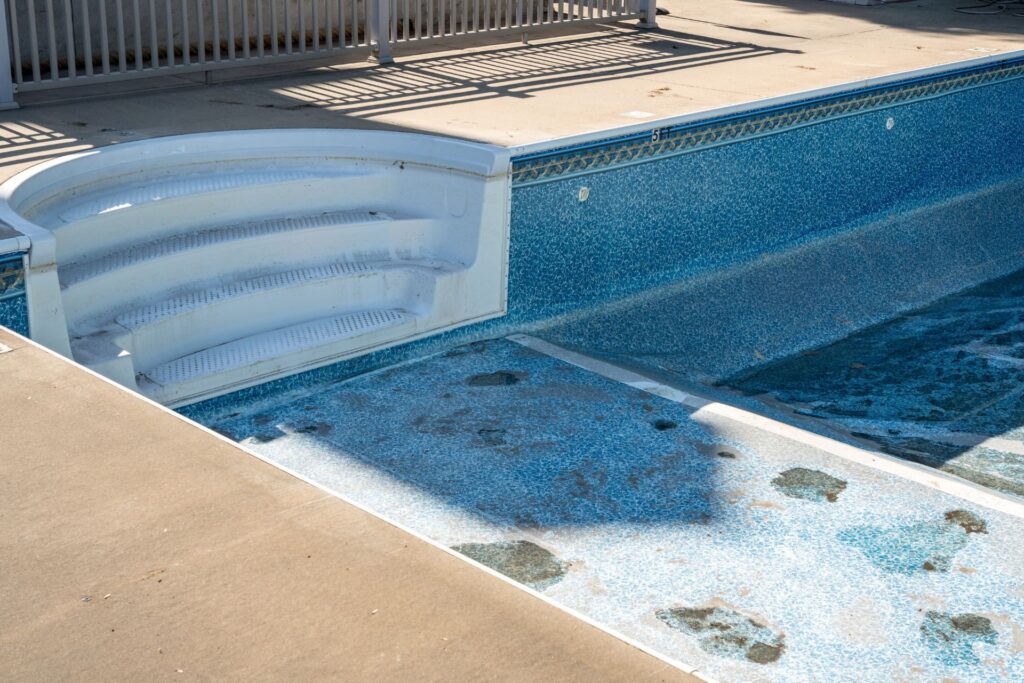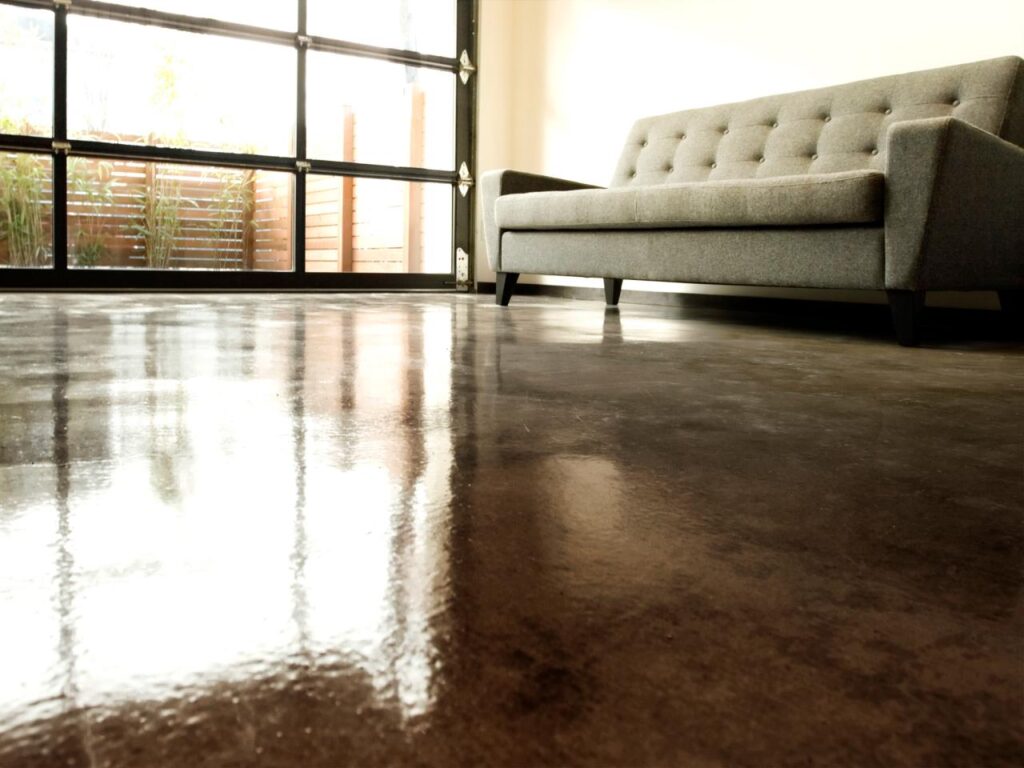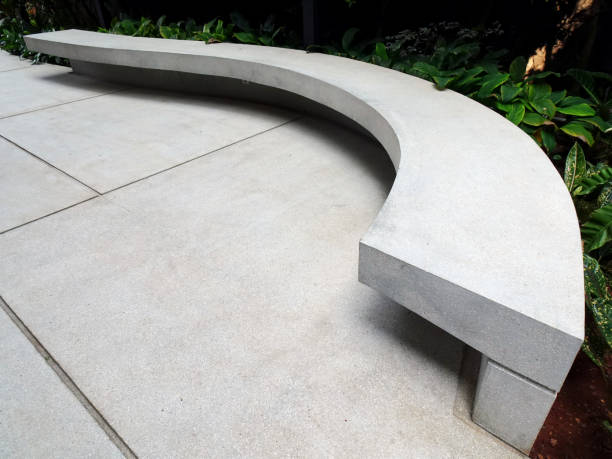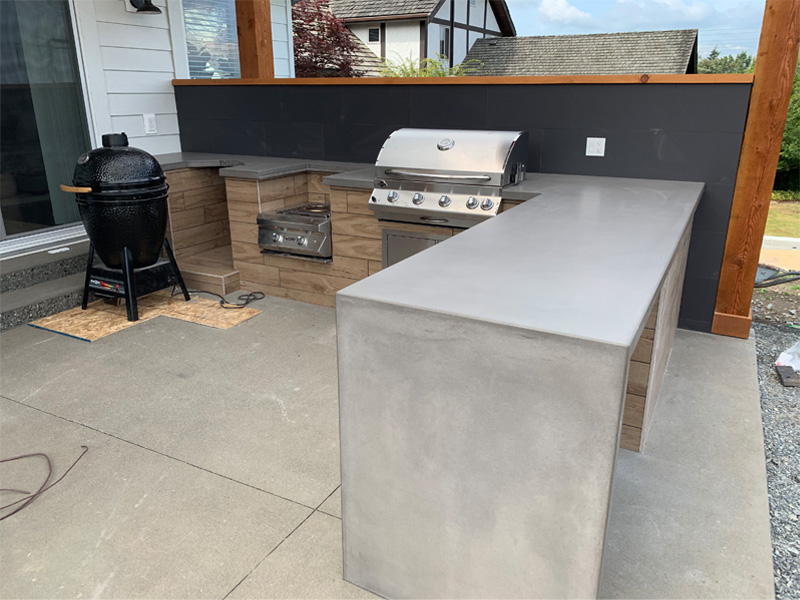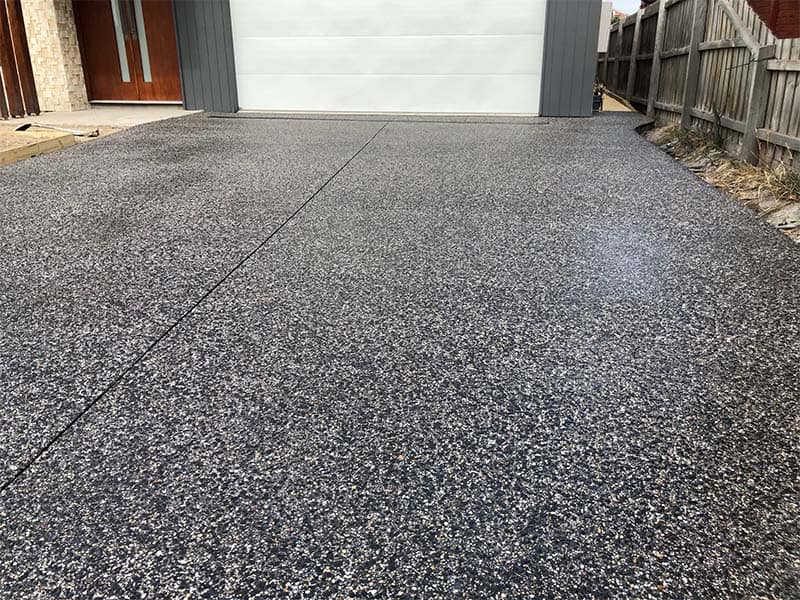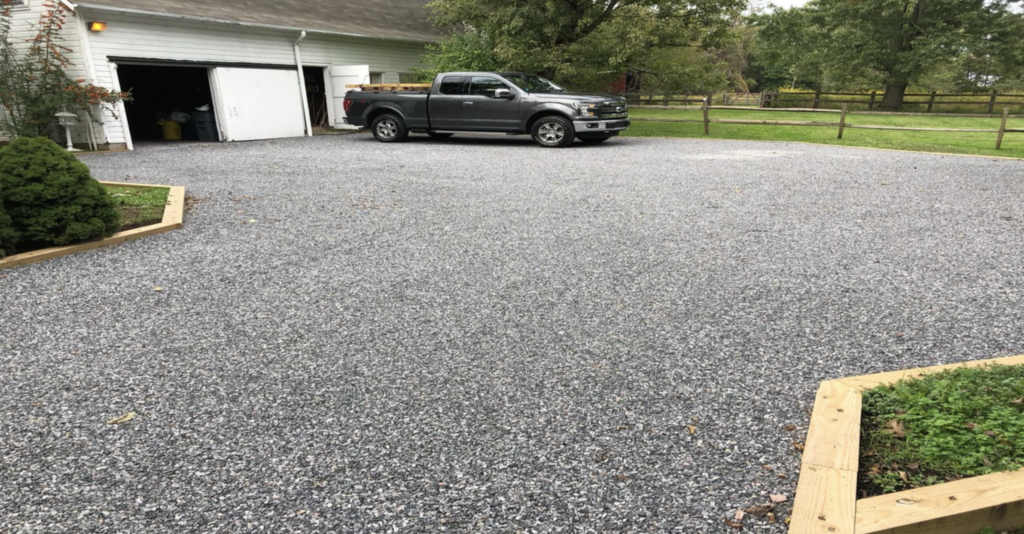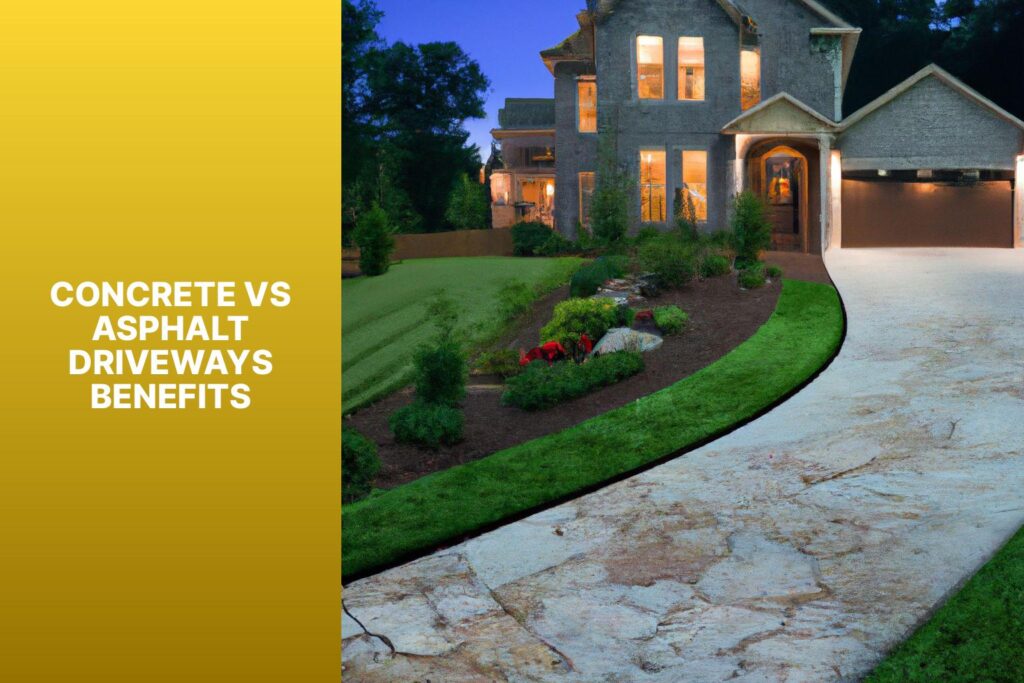Welcome to your ultimate guide on maintaining the pristine condition of your pool area. A well-maintained concrete pool surround not only enhances the aesthetic appeal of your backyard oasis but also ensures safety and longevity. Understanding the frequency and importance of resealing your concrete pool surround is crucial for preventing damage from water, chemicals, and weather elements. In this blog post, we’ll delve into why resealing is essential, the factors influencing how often you need to do it, and the steps involved in the resealing process. Whether you’re a seasoned pool owner or new to pool maintenance, this comprehensive guide will provide you with the knowledge and tips needed to keep your pool surround looking its best for years to come.
Typically, you should reseal your concrete pool surround every 2-3 years to maintain its appearance and durability. Factors such as climate, usage, and the type of sealer used can influence this frequency. Regular resealing helps protect against water damage, chemical exposure, and wear and tear, ensuring a safe and attractive pool area.
- Understanding Concrete Pool Surrounds
- The Importance Of Sealing Concrete Pool Surrounds
- Factors Influencing The Resealing Frequency
- Typical Resealing Timelines
- Steps To Reseal Your Concrete Pool Surround
- DIY Vs. Professional Resealing
- Maintenance Tips For Extending The Life Of Your Seal
- Cost Considerations
- FAQs: About How Often Will I Need to Reseal My Concrete Pool Surround
- Why do I need to reseal my concrete pool surround?
- How often should I reseal my concrete pool surround?
- What factors influence the frequency of resealing?
- What are the signs that my pool surround needs resealing?
- Can I reseal the concrete pool surrounding myself?
- What type of sealer should I use for my pool surround?
- How do I prepare my concrete pool surround for resealing?
- How long does it take for the sealer to dry?
- What are the costs associated with resealing a concrete pool surround?
- How can I extend the life of the sealer on my pool surround?
- Conclusion
Understanding Concrete Pool Surrounds
Definition: What is a Concrete Pool Surround?
A concrete pool surround, also known as a pool deck, is the area around your swimming pool made from concrete. This space is not just functional, providing a slip-resistant surface for walking and lounging, but also plays a crucial role in the overall aesthetic of your pool area. Concrete pool surrounds can be customized in various textures, patterns, and colors to complement the design of your pool and outdoor space.
Benefits of Concrete Pool Surrounds
Concrete pool surrounds offer numerous advantages, making them a popular choice among homeowners:
1. Durability: Concrete is known for its strength and longevity. A well-installed concrete pool surround can withstand harsh weather conditions, heavy foot traffic, and the constant presence of water without deteriorating quickly. This durability means that, with proper care, your pool deck can last for many years.
2. Aesthetic Appeal: Concrete offers unparalleled versatility in terms of design. You can choose from a wide range of finishes, including stamped concrete, exposed aggregate, and colored concrete, to create a unique and attractive look. Whether you prefer a natural stone appearance or a sleek modern design, concrete can be tailored to match your vision.
3. Versatility: Beyond aesthetics, concrete is incredibly versatile in functionality. It can be shaped and contoured to fit any pool shape, whether it’s a standard rectangular pool or a custom freeform design. Additionally, concrete surfaces can be treated to enhance safety features, such as slip resistance, which is particularly important in a pool area.
Common Issues with Concrete Pool Surrounds
While concrete pool surrounds are durable and aesthetically pleasing, they are not without their challenges. Understanding these common issues can help you maintain your pool deck effectively:
1. Cracks: One of the most common issues with concrete pool surrounds is cracking. Cracks can occur due to various factors, including ground movement, freeze-thaw cycles, and heavy loads. While minor cracks may not pose a significant problem, larger cracks can compromise the structural integrity of the pool deck and should be repaired promptly.
2. Discoloration: Over time, concrete can become discolored due to exposure to UV rays, pool chemicals, and weather conditions. This discoloration can make the pool surround look aged and worn. Regular cleaning and sealing can help minimize discoloration and keep your concrete looking fresh.
3. Wear Over Time: Like any outdoor surface, concrete pool surrounds can show signs of wear over time. This wear can manifest as surface pitting, scaling, or the gradual loss of texture. Regular maintenance, including resealing and addressing minor damage early, can extend the life of your concrete pool deck and maintain its appearance.
By understanding these aspects of concrete pool surrounds you can make informed decisions about installation, maintenance, and repair, ensuring that your pool area remains both functional and beautiful for years to come. Regular upkeep and timely repairs will help you enjoy the benefits of your concrete pool surround without being troubled by common issues.
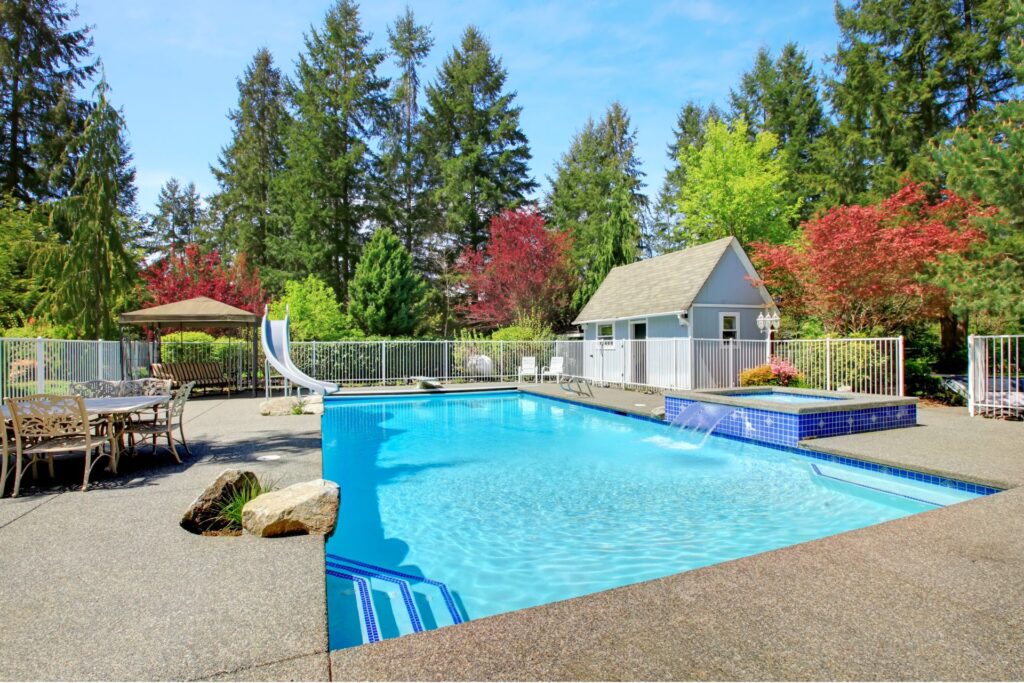
The Importance Of Sealing Concrete Pool Surrounds
Sealing your concrete pool surround is a crucial step in maintaining the integrity and safety of your pool area. Here’s why it’s essential:
Protection
Concrete is naturally porous, which means it can absorb water and other substances that can cause damage over time. Sealing the concrete creates a barrier that protects it from water damage, chlorine, and other chemicals commonly found in pool environments. Chlorine, in particular, can be quite harsh and over time can break down the concrete, leading to cracks and other forms of deterioration. By sealing your concrete pool surround, you are effectively extending its lifespan and preserving its structural integrity.
Appearance
A sealed concrete pool surround maintains a fresh and clean appearance for much longer than an unsealed one. Over time, exposure to the elements, pool chemicals, and everyday wear and tear can lead to unsightly stains and discoloration. These stains can be difficult, if not impossible, to remove once they have set in. Sealing the concrete helps to prevent these stains from penetrating the surface, making it much easier to clean and maintain. Additionally, a sealed surface often enhances the natural color and texture of the concrete, giving your pool area a polished and well-maintained look.
Safety
One of the most important reasons to seal your concrete pool surround is safety. Wet concrete can be very slippery, posing a significant risk of slips and falls, especially in a pool environment where people are often barefoot and water is splashed around frequently. A quality sealer can add a layer of texture to the concrete, reducing its slipperiness and making it safer for everyone. This is especially important if children or elderly individuals use the pool, as they are more susceptible to accidents. By sealing the concrete, you are not only protecting the material but also enhancing the safety of your pool area.
In summary, sealing your concrete pool surround is an essential maintenance step that offers multiple benefits. It protects the concrete from water and chemical damage, helps maintain its appearance by preventing stains, and enhances safety by reducing slipperiness. By investing in a good quality sealer, you can ensure that your pool area remains beautiful, functional, and safe for years to come.

Factors Influencing The Resealing Frequency
When it comes to maintaining your concrete pool surround, several factors influence how often you’ll need to reseal it. Understanding these factors can help you plan better and ensure the longevity and appearance of your pool area.
Climate and Weather Conditions
One of the primary factors affecting the resealing frequency is the local climate and weather conditions. Exposure to the sun, rain, and temperature fluctuations can significantly impact the integrity of the sealer.
Sun Exposure: Constant exposure to UV rays can cause the sealer to degrade more quickly, leading to fading and a loss of protective properties. For instance, in regions with intense sunlight, such as parts of Australia or the southwestern United States, pool surrounds may need to be resealed more frequently to maintain their appearance and protection.
Rain and Moisture: In contrast, areas with high humidity and frequent rainfall can also pose a challenge. Water can penetrate the sealer over time, especially if it’s not applied correctly. This can lead to the growth of mold and mildew, which not only affects the look but also the safety of the pool surround. For example, coastal areas with salty, moist air might require more frequent resealing to prevent damage from moisture infiltration.
Temperature Fluctuations: Regions experiencing significant temperature variations can also see more wear and tear on the sealer. The expansion and contraction of concrete due to temperature changes can cause the sealer to crack and peel. In places with cold winters and hot summers, such as the northern United States, the freeze-thaw cycles can be particularly damaging, necessitating more frequent resealing.
Usage and Foot Traffic
The amount and type of usage your pool area receives also play a crucial role. Heavy foot traffic and regular use can lead to quicker wear and tear, reducing the effectiveness of the sealer.
Heavy Use: If your pool is a popular spot for gatherings and parties, the constant movement of people can wear down the sealer faster. For instance, a commercial pool or a pool in a household with children and pets will likely need more frequent resealing than a pool used occasionally by a couple.
Real-life Scenarios: Think about a public pool in a community center versus a private pool in a retirement home. The former sees much higher foot traffic and will require more frequent maintenance compared to the latter, where the use is more controlled and minimal.
Type of Sealer Used
The type of sealer you choose can significantly impact how often you need to reseal your concrete pool surround. Different sealers offer varying levels of protection and longevity.
Acrylic Sealers: These are popular due to their affordability and ease of application. However, they generally have a shorter lifespan and may need to be reapplied every 1-3 years, especially in high-traffic or harsh weather conditions.
Epoxy Sealers: Known for their durability and strong protective qualities, epoxy sealers can last longer, often up to 5-7 years. They provide excellent resistance to chemicals and water, making them ideal for pool areas. However, they can be more expensive and require professional application.
Penetrating Sealers: These sealers penetrate the concrete surface to offer protection from within. They tend to last longer than acrylic sealers and are less affected by surface wear and UV exposure. Depending on the specific product and conditions, penetrating sealers can last 5-10 years before needing reapplication.
Each type of sealer has its pros and cons, and the choice will depend on your specific needs and budget.
Quality of Initial Installation
The quality of the initial installation of your pool surround sealer is crucial. A professional application ensures that the sealer is applied evenly and thoroughly, providing maximum protection and longevity.
Professional Application: Hiring a professional ensures that the sealer is applied under optimal conditions, adhering to manufacturer guidelines. This helps in achieving a uniform coat that fully protects the concrete surface. Skimping on professional installation might save money initially, but it can lead to frequent resealing needs and higher costs in the long run.
Initial Quality Impact: The initial quality of the sealer application significantly impacts how often you’ll need to reseal. A poorly applied sealer can develop cracks, bubbles, and peeling, reducing its effectiveness. Conversely, a high-quality, professionally applied sealer can provide a robust protective layer, minimizing the need for frequent maintenance.
In conclusion, the frequency with which you need to reseal your concrete pool surround depends on various factors, including climate conditions, usage levels, the type of sealer used, and the quality of the initial installation. By understanding these factors, you can make informed decisions to ensure your pool area remains safe, attractive, and durable.
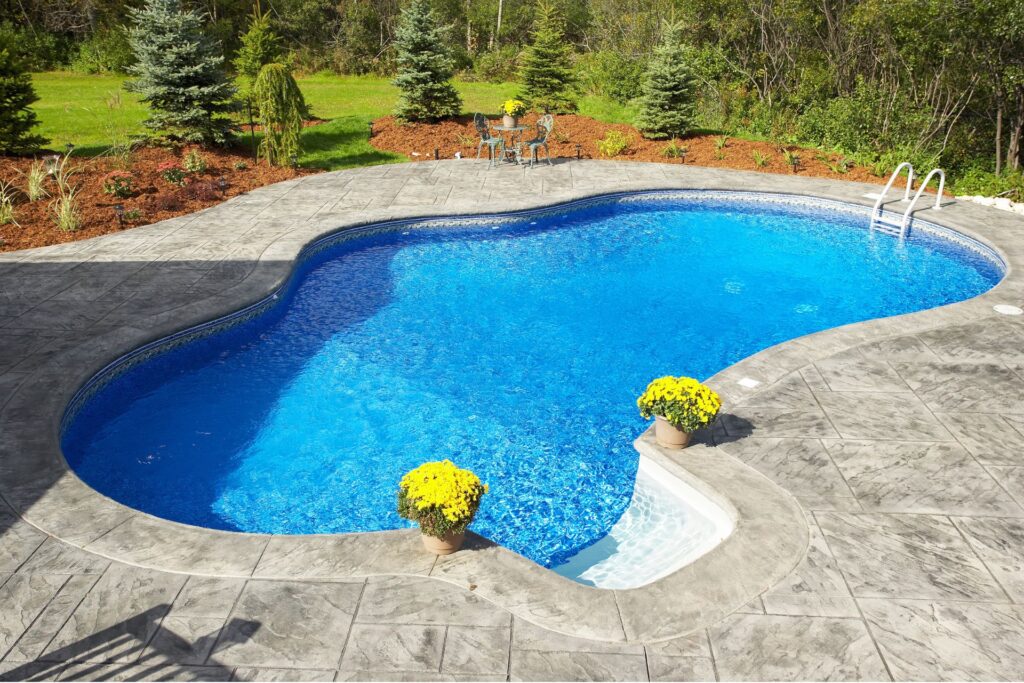
Typical Resealing Timelines
General Guidelines
Maintaining the integrity and aesthetics of your concrete pool surround is crucial, and resealing plays a pivotal role in this process. On average, it is recommended to reseal your concrete pool surround every 2-3 years. This timeframe ensures that the surface remains protected from harsh weather conditions, pool chemicals, and daily wear and tear. However, this general guideline can vary based on several factors such as the quality of the initial sealant, the frequency of use, and the specific environmental conditions in your area.
Signs That It’s Time to Reseal
It’s essential to keep an eye out for certain indicators that signal it’s time for resealing. Ignoring these signs can lead to more extensive damage and costly repairs down the line.
Visible Wear and Tear: Over time, you’ll notice visible signs of wear and tear on your concrete pool surround. This can include cracks, chips, or discoloration. These signs indicate that the sealant has worn off and is no longer providing adequate protection.
Water Absorption and Loss of Gloss: Another key indicator is water absorption. If you observe that the concrete is absorbing water rather than repelling it, it’s a clear sign that the sealant is failing. Additionally, a loss of gloss or shine on the surface means the protective layer has worn thin and needs replenishment.
Slipperiness and Safety Concerns: Safety is paramount around a pool area. When the sealant wears off, the surface can become slippery, increasing the risk of accidents. If you notice the area becoming slicker than usual, it’s time to consider resealing to restore the non-slip properties of the surface.
By adhering to these guidelines and paying attention to the signs of wear, you can ensure that your concrete pool surround remains safe, durable, and visually appealing for years to come. Regular maintenance, including timely resealing, will save you from more significant issues and keep your pool area in top condition.

Steps To Reseal Your Concrete Pool Surround
Resealing your concrete pool surround is a critical maintenance task that ensures the longevity and aesthetic appeal of your pool area. This guide will walk you through the essential steps to reseal your concrete pool surround effectively.
Preparation
The first step in resealing your concrete pool surround is thorough preparation. Proper preparation ensures that the sealer adheres well and provides a durable finish.
1. Cleaning the Surface Thoroughly: Begin by cleaning the concrete surface meticulously. Remove all dirt, debris, algae, and stains using a pressure washer or a stiff brush with a concrete cleaner. This step is crucial as any residue left on the surface can prevent the sealer from adhering properly, leading to a patchy or peeling finish.
2. Repairing Any Cracks or Damage: Inspect the concrete for any cracks, chips, or damage. Use a concrete patching compound to fill in any imperfections. Allow the compound to dry completely as per the manufacturer’s instructions. This repair process not only ensures a smooth surface for sealing but also prevents water from seeping into the cracks and causing further damage.
Application Process
Once the surface is prepared, the next step is to apply the sealer. The choice of sealer and the application method are vital to achieving a professional finish.
1. Choosing the Right Sealer: Select a high-quality concrete sealer that is suitable for pool surrounds. Consider factors such as slip resistance, UV protection, and durability. Water-based sealers are often preferred for their ease of application and environmental friendliness, while solvent-based sealers might offer longer-lasting protection.
2. Step-by-Step Guide to Applying the Sealer:
- Read the Instructions: Carefully read the manufacturer’s instructions on the sealer. Each product might have specific guidelines for application.
- Apply the Sealer Evenly: Use a roller or a sprayer to apply the sealer evenly across the surface. Work in small sections to ensure even coverage. For best results, apply two thin coats rather than one thick coat.
- Overlap and Feather: When applying the sealer, overlap slightly with each pass and feather out the edges to avoid visible lines or streaks.
- Avoid Puddling: Ensure that the sealer does not puddle in any areas. Puddles can lead to uneven drying and a blotchy appearance.
Drying and Curing
The final step involves allowing the sealer to dry and cure properly. Patience during this stage will ensure a durable and attractive finish.
1. Time Needed for the Sealer to Dry: The drying time can vary based on the type of sealer and weather conditions. Typically, it can take anywhere from a few hours to 24 hours for the surface to be dry to the touch. Avoid using the pool area during this period.
2. Tips for Ensuring a Long-Lasting Finish:
- Avoid Traffic: Prevent any foot or vehicle traffic on the newly sealed surface until it is fully cured. This can take up to 72 hours, depending on the product used.
- Protect from Water: Ensure the surface remains dry during the curing process. Rain or pool water can interfere with the curing and affect the sealer’s performance.
- Regular Maintenance: Maintain your newly sealed pool surround by regularly cleaning it and addressing any minor damage promptly. This will extend the life of the sealer and keep your pool area looking pristine.
By following these steps, you can effectively reseal your concrete pool surround, enhancing its durability and appearance. Regular maintenance and proper sealing can protect your investment and keep your pool area safe and inviting for years to come.

DIY Vs. Professional Resealing
When it comes to resealing your concrete pool surround, deciding between a DIY approach and hiring a professional can be challenging. Both options have their advantages and disadvantages, and understanding these can help you make an informed decision that suits your needs and budget.
DIY Resealing
Opting to reseal your concrete pool surround yourself can be a rewarding experience, but it also comes with its own set of challenges.
Pros of DIY Resealing:
1. Cost Savings: One of the most significant advantages of DIY resealing is the potential to save money. By eliminating labor costs, you can complete the project at a fraction of the price of hiring a professional.
2. Control and Flexibility: When you tackle the project yourself, you have complete control over the process. You can choose your materials, set your schedule, and work at your own pace.
3. Personal Satisfaction: Successfully completing a DIY project can be immensely satisfying. It allows you to develop new skills and take pride in maintaining your property.
Cons of DIY Resealing:
1. Time-Consuming: DIY resealing can be time-consuming, especially if you lack experience. Preparing the surface, applying the sealant, and ensuring it cures properly can take several days.
2. Risk of Mistakes: Without professional expertise, there is a higher risk of making mistakes. Common errors include uneven application, missed spots, or choosing the wrong type of sealant.
3. Quality of Finish: Professionals have access to high-quality materials and equipment that may not be available to the average homeowner. This can result in a more durable and aesthetically pleasing finish.
Common Mistakes to Avoid:
1. Inadequate Surface Preparation: Properly cleaning and preparing the surface is crucial for a successful resealing job. Skipping this step can lead to poor adhesion and a shorter lifespan for the sealant.
2. Incorrect Sealant Choice: Using the wrong type of sealant for your specific concrete can result in subpar protection and durability. Make sure to choose a sealant designed for outdoor concrete surfaces.
3. Improper Application: Applying too much or too little sealant can affect the effectiveness of the resealing. Follow the manufacturer’s instructions carefully to ensure an even and adequate application.
Professional Resealing
Hiring a professional to reseal your concrete pool surround can offer peace of mind and superior results, though it comes at a higher cost.
Benefits of Hiring a Professional
1. Expertise and Experience: Professionals have the knowledge and experience to handle the resealing process efficiently and effectively. They can identify and address potential issues that a DIY enthusiast might overlook.
2. High-Quality Materials and Equipment: Professionals use industry-grade materials and equipment that can provide a longer-lasting and more attractive finish. They also know which products are best suited for your specific type of concrete.
3. Time Savings: Hiring a professional frees up your time, allowing you to focus on other tasks or simply relax. The project will likely be completed faster than if you were to do it yourself.
Cost Considerations and Finding the Right Contractor:
1. Cost of Professional Services: The cost of professional resealing varies based on the size of the area, the condition of the concrete, and the type of sealant used. While it is more expensive than DIY, the long-term benefits often justify the investment.
2. Getting Multiple Quotes: To ensure you get a fair price, obtain quotes from several contractors. This will give you a better understanding of the going rate and help you choose a contractor that fits your budget.
3. Checking References and Reviews: Before hiring a contractor, check their references and read online reviews. This will give you an idea of their reliability, quality of work, and customer satisfaction.
4. Contract and Warranty: Make sure the contractor provides a written contract outlining the scope of work, materials to be used, and the total cost. Additionally, inquire about any warranties or guarantees on their work.
Choosing between DIY and professional resealing depends on your budget, time, and confidence in your skills. While DIY can be cost-effective and rewarding, professional resealing ensures a high-quality finish and longevity. Weighing the pros and cons of each approach will help you make the best decision for maintaining your concrete pool surround.

Maintenance Tips For Extending The Life Of Your Seal
Proper maintenance is essential for extending the life of your seal, ensuring it remains effective and attractive over time. Here are some valuable tips to help you keep your sealed surfaces in top condition.
Regular Cleaning and Upkeep
Recommended Cleaning Routines
Regular cleaning is crucial for maintaining the integrity of your seal. Dust and dirt can act as abrasives, gradually wearing down the sealant layer. To prevent this, establish a routine that includes:
Daily Sweeping or Dusting: Use a soft broom or a microfiber cloth to remove loose dirt and debris. This prevents the accumulation of particles that could scratch the surface.
Weekly Mopping: For sealed floors, mopping once a week with a damp mop can help maintain cleanliness. Use warm water and a mild, pH-neutral cleaner to avoid damaging the seal.
Monthly Deep Cleaning: Depending on the traffic in the area, consider a deeper cleaning every month. Use a gentle cleaning solution designed specifically for sealed surfaces to avoid stripping the sealant.
Products to Use and Avoid
Choosing the right products is essential for preserving your seal. Here’s what you need to know:
Use: Mild, pH-neutral cleaners are ideal. These products are effective in cleaning without being harsh on the seal. Always dilute according to the manufacturer’s instructions.
Avoid: Steer clear of acidic or alkaline cleaners, as they can break down the sealant. Abrasive scrubbers or harsh chemical cleaners can also cause damage. Avoid using vinegar, bleach, or ammonia-based products.
Preventative Measures
Using Mats and Furniture Protectors
Preventative measures can significantly extend the life of your seal. Here’s how to protect your sealed surfaces from damage:
Entrance Mats: Place mats at entry points to catch dirt and moisture before they reach your sealed floors. This reduces the risk of abrasive particles scratching the surface.
Furniture Pads: Use felt pads under furniture legs to prevent scratches and gouges when moving pieces around. Regularly check these pads for wear and replace them as needed.
Area Rugs: In high-traffic areas, use rugs to provide an additional layer of protection. This helps distribute the weight and minimizes direct impact on the sealed surface.
Avoiding Harsh Chemicals and Physical Damage
To preserve the seal, it’s essential to avoid certain substances and activities that can cause harm:
Harsh Chemicals: As mentioned, avoid cleaners with strong chemicals. Additionally, be cautious with spills from household products like nail polish remover, which can contain acetone, a solvent that can damage sealants.
Physical Damage: Prevent scratches and chips by handling heavy objects carefully. Do not drag heavy furniture or appliances across the floor. If you need to move something substantial, lift it or use moving aids designed to protect the surface.
By following these maintenance tips, you can ensure that your sealed surfaces remain durable and visually appealing for years to come. Regular cleaning, combined with preventative measures, will help you get the most out of your seal and maintain the beauty of your space.

Cost Considerations
When planning for the maintenance of your concrete pool surround, understanding the cost implications is crucial. This section will delve into the initial sealing costs and the long-term resealing expenses, providing a comprehensive guide to budgeting for these essential upkeep tasks.
Initial Sealing Costs
Breakdown of Costs for Different Sealers
Sealing your concrete pool surround is a vital first step in ensuring its longevity and durability. The initial costs can vary widely depending on the type of sealer you choose. Here’s a breakdown of the costs associated with different types of sealers:
1. Acrylic Sealers: Typically, acrylic sealers are the most affordable option, ranging from $0.15 to $0.25 per square foot. These sealers are easy to apply and provide a clear, protective layer that enhances the concrete’s appearance.
2. Epoxy Sealers: More durable and expensive, epoxy sealers can cost between $0.75 and $1.50 per square foot. They offer superior protection against chemicals and stains, making them ideal for pool surrounds that endure heavy use.
3. Polyurethane Sealers: Known for their excellent durability and resistance to UV rays, polyurethane sealers range from $0.50 to $1.00 per square foot. They are a popular choice for outdoor concrete surfaces exposed to sunlight.
4. Penetrating Sealers: These sealers, which penetrate deep into the concrete to provide long-lasting protection, can cost from $0.75 to $2.00 per square foot. They are particularly effective against water and chemical damage.
The initial sealing cost includes not only the price of the sealer but also labor if you hire professionals. On average, you might spend between $300 and $600 for a typical pool surround, depending on its size and the sealer type.
Resealing Costs Over Time
Long-Term Cost Savings of Regular Maintenance
Regular maintenance and resealing of your concrete pool surround can lead to significant long-term cost savings. While it might seem like an ongoing expense, consider it an investment in the longevity of your pool area. Resealing helps prevent damage from water, chemicals, and UV rays, which can lead to costly repairs if left unaddressed.
1. Frequency of Resealing: Typically, a concrete pool surround should be resealed every 2 to 3 years. The frequency depends on factors such as weather conditions, pool usage, and the type of sealer used initially.
2. Cost of Resealing: The cost of resealing usually ranges from $0.50 to $2.00 per square foot, similar to the initial sealing costs. This means that for a standard pool surround, you might spend between $200 and $500 every few years.
Budgeting for Future Resealing
To effectively manage the costs associated with maintaining your concrete pool surround, it’s essential to budget for future resealing. Here are some tips:
1. Plan Ahead: Allocate a portion of your annual home maintenance budget to cover resealing costs. By setting aside funds regularly, you can avoid the financial strain of unexpected expenses.
2. Compare Quotes: Obtain quotes from multiple contractors to ensure you get the best value for your money. Look for professionals with experience in sealing concrete pool surrounds to ensure high-quality workmanship.
3. DIY vs. Professional Services: While resealing can be a DIY project, hiring professionals ensures that the job is done correctly and efficiently. Weigh the pros and cons of each option based on your budget and skill level.
4. Consider Quality Over Cost: Opting for higher-quality sealers may have a higher upfront cost but can extend the time between resealing, ultimately saving you money in the long run.
By understanding the initial sealing costs and planning for regular resealing, you can maintain a beautiful and durable concrete pool surround without breaking the bank. Proper budgeting and maintenance ensure that your pool area remains a safe and enjoyable space for years to come.
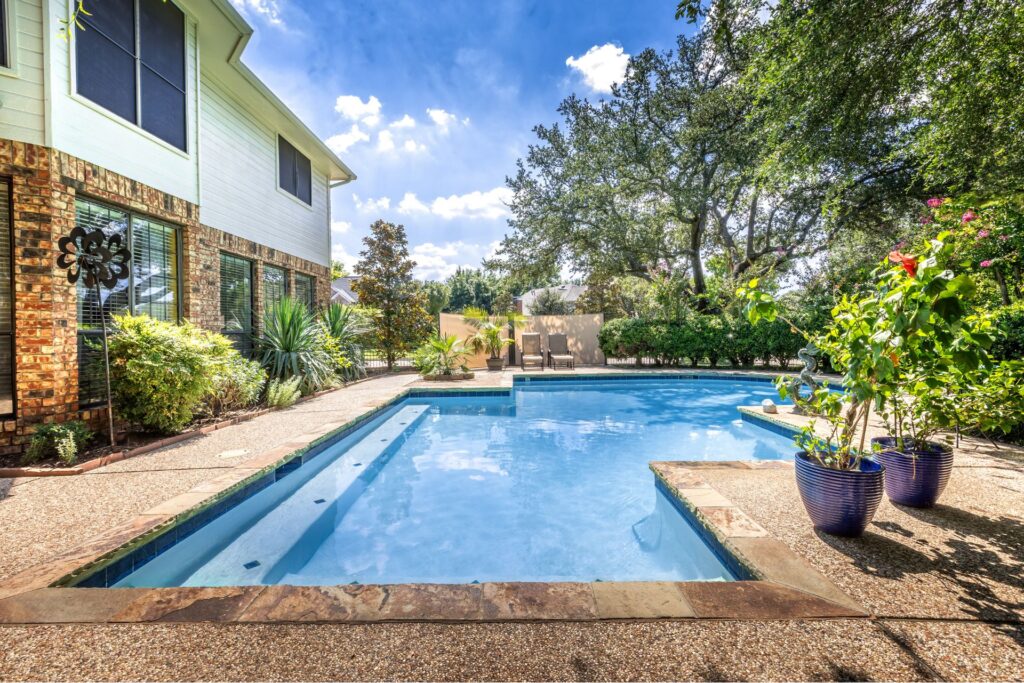
FAQs: About How Often Will I Need to Reseal My Concrete Pool Surround
Why do I need to reseal my concrete pool surround?
Resealing your concrete pool surround helps protect it from water damage, chemical exposure, and general wear and tear. It also maintains the aesthetic appeal and safety of the area by reducing slipperiness.
How often should I reseal my concrete pool surround?
You should reseal your concrete pool surround every 2-3 years. This timeline can vary depending on factors like climate, usage, and the type of sealer used.
What factors influence the frequency of resealing?
The frequency of resealing is influenced by climate conditions, the amount of foot traffic, the type of sealer used, and the quality of the initial installation.
What are the signs that my pool surround needs resealing?
Signs that your pool surround needs resealing include visible wear and tear, water absorption, loss of gloss, and increased slipperiness.
Can I reseal the concrete pool surrounding myself?
Yes, you can reseal your concrete pool and surround yourself. However, it involves a detailed process of cleaning, repairing, and applying the sealer correctly. Hiring a professional might ensure a more durable finish.
What type of sealer should I use for my pool surround?
Common types of sealers include acrylic, epoxy, and penetrating sealers. Each type has its pros and cons, so choose one based on your specific needs and the advice of a professional.
How do I prepare my concrete pool surround for resealing?
Preparation involves thoroughly cleaning the surface, repairing any cracks or damage, and ensuring the area is dry and free of debris before applying the sealer.
How long does it take for the sealer to dry?
The drying time for sealers can vary, but typically it takes about 24-48 hours for the sealer to dry completely. During this time, avoid using the pool surround to ensure a proper finish.
What are the costs associated with resealing a concrete pool surround?
The costs of resealing can vary based on the type of sealer used and whether you choose to do it yourself or hire a professional. On average, DIY costs are lower, but professional services might offer better durability and finish.
How can I extend the life of the sealer on my pool surround?
To extend the life of the sealer, regularly clean the pool surround, avoid harsh chemicals, use mats and furniture protectors, and address any damage immediately. Regular maintenance can help prolong the need for resealing.
Conclusion
In conclusion, maintaining the beauty and functionality of your concrete pool surrounds requires regular resealing. By summarizing the key points discussed, it’s clear that resealing not only enhances the appearance of your pool area but also protects the concrete from damage and extends its lifespan. Regular maintenance is crucial in preventing costly repairs and ensuring a safe, attractive environment for years to come. Therefore, take a moment to assess the condition of your pool surrounds and plan for resealing as needed. Proactive care today will save you time and money tomorrow, keeping your pool area in top condition.
About the Author:
Mike Veail is a recognized digital marketing expert with over 6 years of experience in helping tradespeople and small businesses thrive online. A former quantity surveyor, Mike combines deep industry knowledge with hands-on expertise in SEO and Google Ads. His marketing strategies are tailored to the specific needs of the trades sector, helping businesses increase visibility and generate more leads through proven, ethical methods.
Mike has successfully partnered with numerous companies, establishing a track record of delivering measurable results. His work has been featured across various platforms that showcase his expertise in lead generation and online marketing for the trades sector.
Learn more about Mike's experience and services at https://theleadguy.online or follow him on social media:
